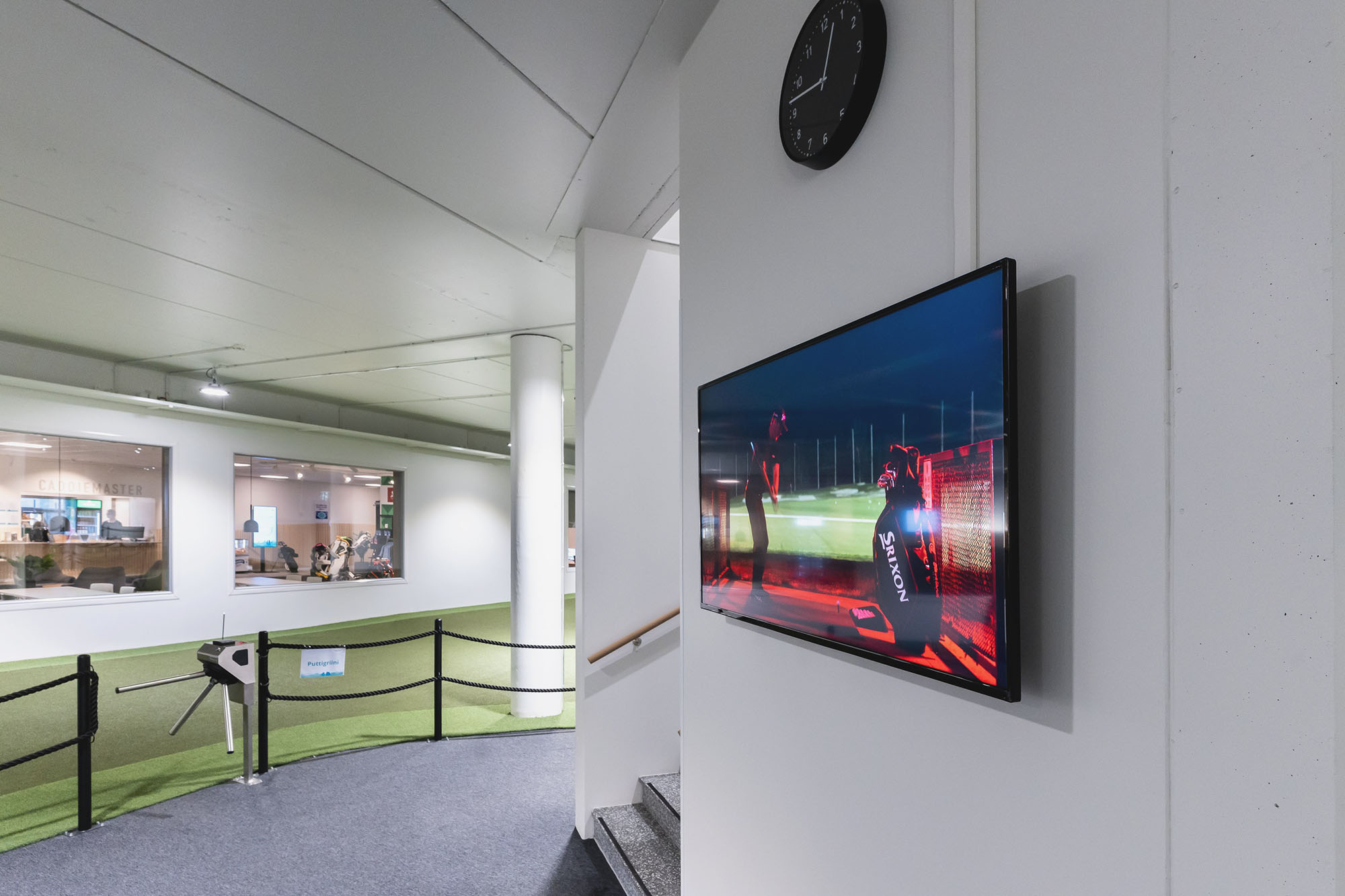When planning to implement digital signage software, the ball often ends up in the court of the IT management or IT team. What does this mean in practice? Above all, smooth implementation, easy-to-implement integrations, clear user roles and strong information security throughout. When implemented well, an digital signage display system does not increase IT’s workload, but rather reduces it:
- Users can update content themselves
- User role management is clear
- The system updates in a controlled manner
- Devices remain under remote control
FirstView’n ratkaisut on rakennettu juuri tästä lähtökohdasta. To minimize the burden on IT management, content management must be easy and secure. This way, system deployment and management will cause as little additional work as possible. This blog takes a closer look at how to deliver digital signage system safely and in a controlled manner – and why it’s worth it.
Read also: How to recognize an easy-to-use digital signage software »
Smooth implementation into the existing IT environment
A modern digital signage system is part of a company’s broader IT infrastructure. The implementation should feel familiar: devices are connected to the network, authenticated and transferred to management, after which content scheduling and playlists roll out on their own. FirstView MediaCloud is a cloud service that enables centralized maintenance and decentralized content production. New displays can be added to the service in stages: first a pilot, then an expansion – without separate heavy projects.
Practically IT’s role is to define the basic policies (network, updates, user rights) and ensure that the management model fits the organization’s way of working. After that, communications and business units can produce content independently.
Up-to-date information with integrations
The power of digital signage comes from real-time information. For example, a room reservations can be integrated into MediaCloud so that the status of meeting rooms is visible in the lobby, or an intranet and M365 environment can be integrated so that news and instructions are automatically updated on the screens. In production environments, integration with MES/ERP systems opens up the possibility of displaying real-time KPI indicators and safety information in production facilities. Firstview’s integrations are always secure. The secure practices implemented through the service ensure that no vulnerabilities arise during integrations.
The latest addition is Canva integration, which speeds up content production: thanks to ready-made templates and brand elements, communications can get materials onto screens in an instant from a familiar service. As updates are made through back-end systems, manual adjustments are reduced and the risk of errors is reduced.
Read more about Canva integration: Smoother content production with Canva »
Information security: foundation, practices and visibility
Information security is not just a setting on a list, but the foundation of our entire architecture. In the FirstView environment, all data transmission is encrypted, and the service’s cloud and data stores are located in Europe. Access rights are built on a role-based basis so that everyone has access only to what is needed for work. In addition, two-factor authentication and SSO support a complete information security solution.
At the device level, hardened default settings are followed: unnecessary ports closed, only necessary services open. In addition, devices can be connected to the internal network, so that all communication remains within the organization’s own networks and firewalls. Content visibility is controlled on a display and location-specific basis, so that, for example, production data is only visible on those production displays where it is needed. This minimizes the possibility of both data leakage and human error.
Automatic software updates keep media players, digital displays and applications up to date. For IT, this means predictability: agreed update windows, testing when necessary and a clear version history. When the system resembles a familiar cloud service more than manual maintenance of individual devices, risks and workload are reduced.
High data security is ensured by, among other things:
- SSL-secured connections
- Automatic software updates that keep devices up to date
- User roles, SSO and 2FA
- Cloud services and data storage located in Europe
- Regular staff training
- Possibility to connect devices to the internal network, so that all communication remains within the organization’s own network
Remote management and centralized maintenance
Remote management means that all the different devices in the system can be managed from anywhere. This allows IT managers to monitor and manage all devices from one central view. Above all, the central management view provides an overall picture of the situation: what displays are on the network, what they are playing and what condition they are in. In case of failure, real-time monitoring helps to find the cause quickly – whether it is the network, firmware or content. In addition, FirstView’s technical support is available to IT managers in all problem situations.
Remote management enables both software updates and configuration changes without physical presence. This saves resources and time as IT can manage the entire system from one location.
Read on the blog why our customers trust us for digital communication solutions

FirstView’s digital signage screens enable Supercell to support internal and external communications globally.
Read the full story »
Energy efficiency and power saving management
Today, all organizations must also pay attention to the environmental impact of their operations. In digital communications, the carbon footprint is affected by, among other things, the energy efficiency of devices and their operating times. Responsibility is also an IT issue.
Optimizing screen usage times and automatic on and off schedules reduce energy consumption and reduce the carbon footprint. The IT department or information management plays a key role in selecting energy-efficient solutions and controlling usage. With MediaCloud’s remote control, screen usage times can be adjusted centrally, permanently or for the duration of a campaign. This ensures that screens are on and in use only when they are needed. When the office is closed and no one is present, screens can also be scheduled to turn off according to working hours. Small adjustments turn into big savings when there are dozens or hundreds of screens.
Read more about choosing devices: Why a basic TV doesn’t work as an digital signage screen »
Scalability and modularity
Needs change, and scalability is already a standard in corporate IT solutions. That is why the digital signage system must be adaptable to both small single-site implementations and multinational networks. FirstView’s architecture is modular: you can start with the most essential (for example, displays in the lobby and production facilities), and later expand to meeting room door displays in conference rooms, other work spaces, or production micro-learning with touch screens. Scaling does not mean a new project, but adding modules to the same management model.
Also read the blog, How micro-learning helps in developing competence »
A management model that works in everyday life
The technology is the easy part, and the rules of the game related to use determine the smoothness of the project. We recommend a clear model where roles and responsibilities are named in advance: IT determines the network and information security policy and device management, comms team owns the content and scheduling, and business units produce their own content using, for example, brand templates. This way, the content goes to the screens without IT having to be involved in content production.
Implementation model for IT management:
- Preparation identifying targets, data sources and integration needs
- Pilot: a limited set of screens and content, where the management model and security paths are tested in practice
- Tietoturva: varmistetaan verkkoasetukset, käyttäjäoikeudet ja päivityskäytännöt
- Content production: brand templates to MediaCloud and content production roles in order
- Extension: rolling deployment one location at a time, metrics visible
It is worth choosing both technical and communication indicators as metrics: device usability, number of support requests, proportion of content that remains up-to-date, and, for example, the effectiveness of production KPI displays.
What should IT ask at the beginning of the purchase?
It’s easy to win a document on paper, but in practice, everyday life matters. From an IT perspective, it’s essential to ensure that the system:
- Enables centralized remote management and automatic updates
- Offers role-based access rights and two-factor authentication
- Supports integrations into existing systems
- Keeps data in Europe and data encrypted
- Scales as locations and numrbers of screens grow without additional projects
When these are in order, other teams can focus on content – and IT can sleep peacefully at night.
A modern digital signage system makes IT’s everyday life easier
A good digita signage system works as part of a company’s IT infrastructure and does not cause a lot of extra work during implementation or in everyday life. When integrations bring up-to-date information to the screens, user rights and roles are in order, updates roll out in a controlled manner and remote management provides visibility into the situation, digital signage supports the flow of information, makes work more efficient and brings value to the entire organization.
Easy deployment and secure management, as well as effortless scaling as operations grow, are critical selection criteria for an infotainment system when asked about IT. Firstview’s system meets all of these practical needs. If you need to update your digital signage to the present day – securely, scalable and controlled – let’s talk. FirstView’s team will help you from pilot to nationwide expansion.



